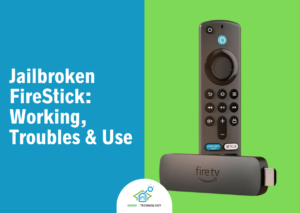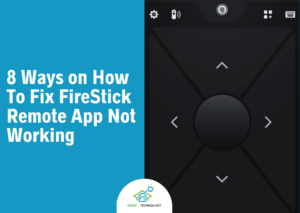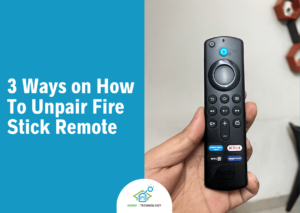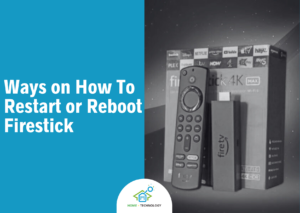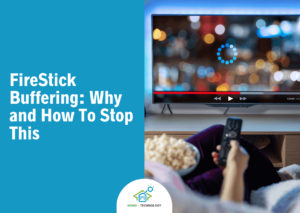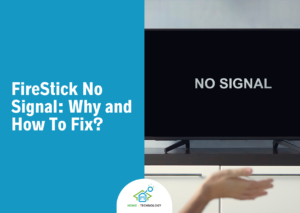FireStick Not Working: 7 Common Problems and Fixes
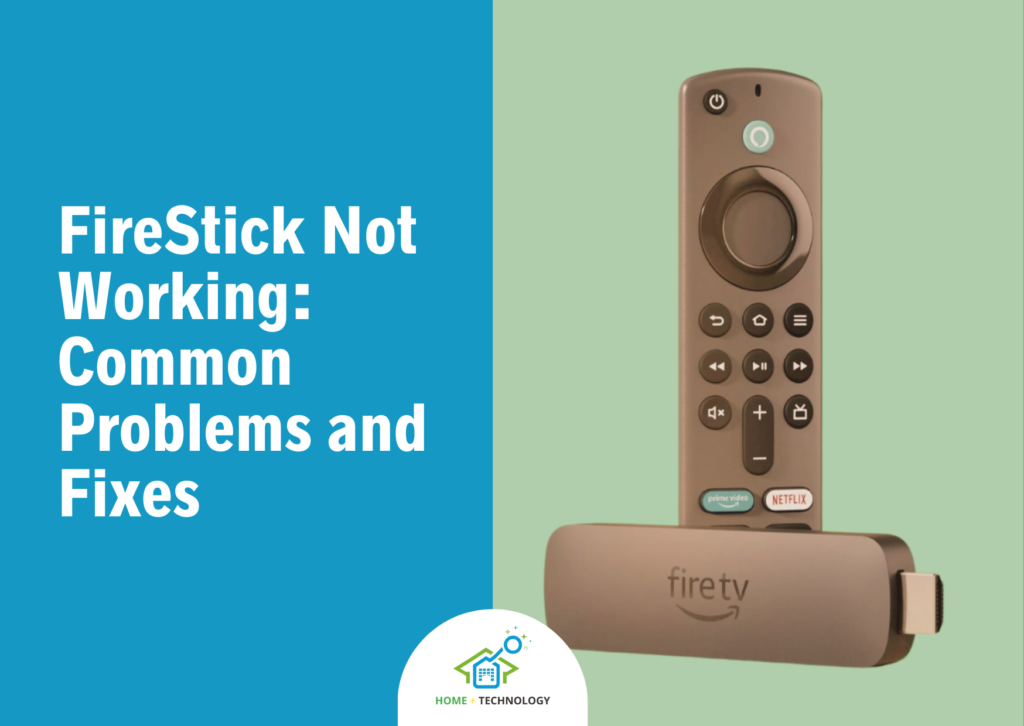
Amazon Firestick doesn’t work due to reasons, including network issues, software glitches, or hardware problems. You can fix many of these common issues by simply restarting your device, resolving problems with your internet connection, and factory resetting your Firestick.
I know it’s frustrating to see such a great Amazon device that makes watching almost all streaming platforms right on the TV not working at all.
I was in the same position a few months back, and I did my research to find out what’s causing this and how I can bring my Firestick back to working condition.
Read on to learn the reasons why your Firestick is not working, common Firestick problems, and how you can fix them.

What Are the Common Firestick Problems That Causes Firestick to Stop Working?
The common Firestick problems that cause Firestick to stop working are listed below.
- FireStick Blank/Black Screen
- FireStick App Crashing
- Firestick Has No Audio
- Firestick Not Connecting To the Internet
- FireStick Unresponsive
- Firestick Overheating
- FireStick Buffering
1. FireStick Blank/Black Screen
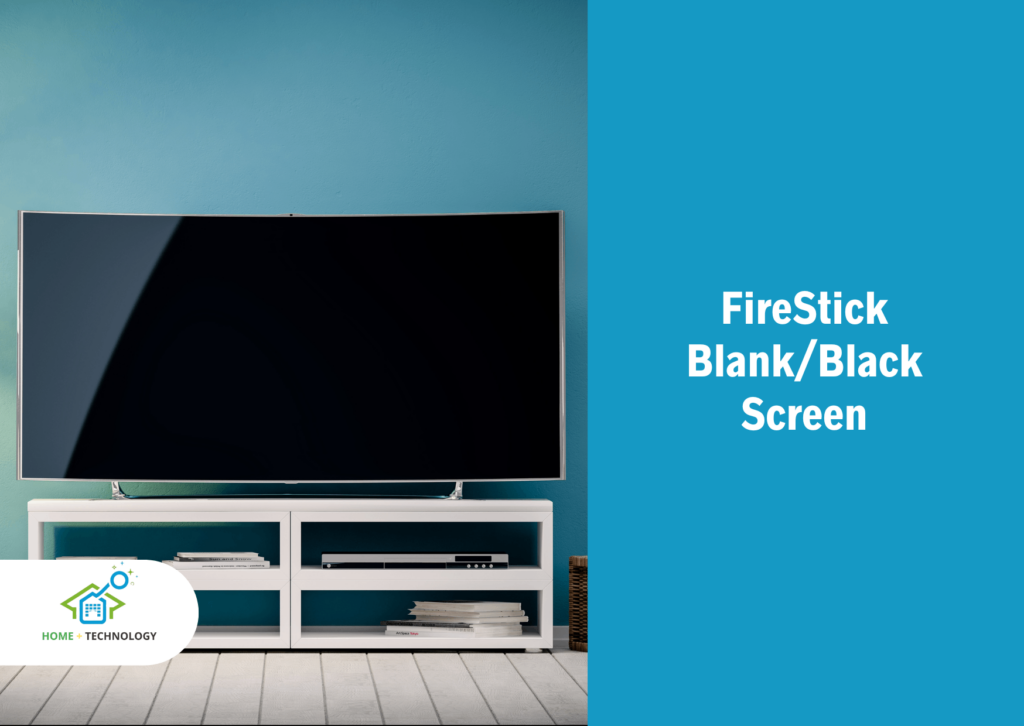
A blank or black screen on your Amazon Firestick is caused by a variety of reasons including HDMI connection issues, software glitches, and hardware wear and tear.
You will have to use the below troubleshooting methods to fix the firestick black screen problem.
- Check HDMI Connection: Ensure that your FireStick is correctly connected to your TV through the HDMI port. Try unplugging and plugging it back in again, or try another HDMI port if available.
- Restart Your FireStick: Restarting the device helps clear temporary files and free up system resources. You can do this via the FireStick menu (Settings > My Fire TV > Restart) or by pressing and holding the “select” and “play/pause” buttons for about 10 seconds.
- Clear Cache and Data: Over time, apps accumulate cache and data that can cause performance issues. Go to Settings > Applications > Manage Installed Applications, select each App, and clear its cache and data.
- Update Your FireStick: Make sure your FireStick has the latest software updates. You can check for updates in Settings > My Fire TV > About > Check for Updates.
- Factory Reset: If all else fails, you need to do a factory reset. This will delete all your personal settings, apps, and data, so use it as a last resort. To do this, go to Settings > My Fire TV > Reset to Factory Defaults.
- Check Your Internet Connection: Streaming issues might be due to a poor or unstable internet connection. You can test your connection in Settings > Network.
2. FireStick App Crashing
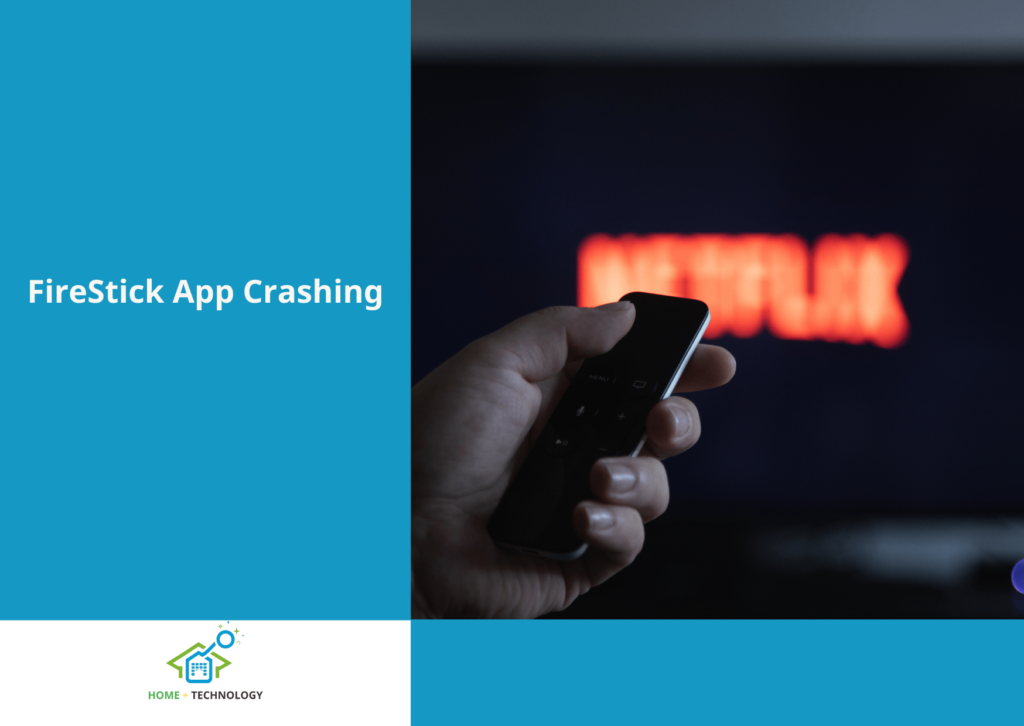
FireStick app crashes can be frustrating and disrupt your streaming experience. These crashes can range from software glitches to issues with your internet connection.
You should use the below fixes to stop the app from crashing on Firestick.
- Restart Your FireStick: A simple restart can often solve a lot of minor glitches, including app crashes. You can do this using the FireStick menu (Settings > My Fire TV > Restart) or just unplug the device from the power source and plug it back in.
- Clear Cache and Data: Over time, apps accumulate cache and data that can cause them to crash. To clear the cache and data, go to Settings > Applications > Manage Installed Applications, select the App, and clear its cache and data.
- Update Your Apps and FireStick: Ensure that your FireStick and all your apps are up-to-date. Updates often come with bug fixes that can resolve app crashes. You can check for updates in Settings > My Fire TV > About > Check for Updates.
- Reinstall the App: If the above solutions don’t work, consider uninstalling and reinstalling the App. This step can help eliminate any issues with the App’s installation that may be causing the crashes.
- Check Your Internet Connection: Poor or unstable internet connections can also cause apps to crash. Test your connection in Settings > Network; if it’s not stable, consider resetting your router or contacting your internet service provider.
3. Firestick Has No Audio
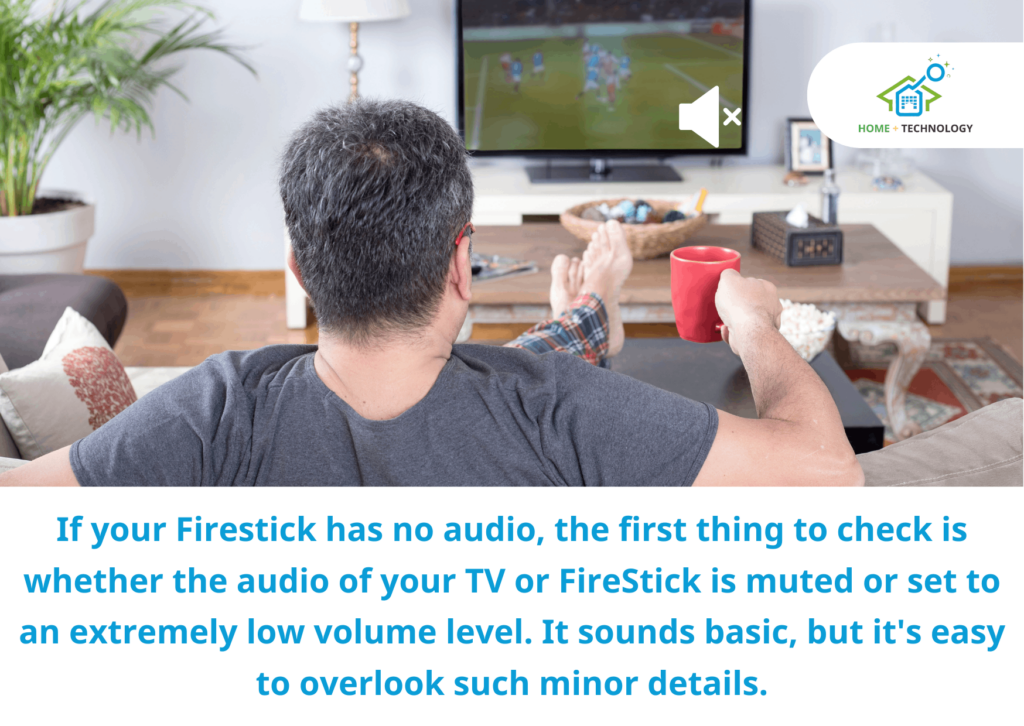
If your Firestick has no audio, the first thing to check is whether the audio of your TV or FireStick is muted or set to an extremely low volume level. It sounds basic, but it’s easy to overlook such minor details.
I know, it’s frustrating, but the solution, however, might be simpler than you think.
If the audio settings have no issue, then it’s time to inspect the connectors. Make sure the HDMI and any other optical connectors are securely plugged in. Also, check for any visible damage on your cables.
Should the issue persist beyond cables and connections, it might be worth looking into potential device updates. If an update is available, install the update.
Another fix involves adjusting an audio setting on your FireStick. Sometimes, disabling Dolby Digital Plus in your FireStick settings can fix the audio issues.
To adjust audio settings on the Firestick, navigate to Settings > Display & Sounds > Audio > Dolby Digital Output, turn it off, and check if this resolves your audio problem.
4. Firestick Not Connecting To the Internet
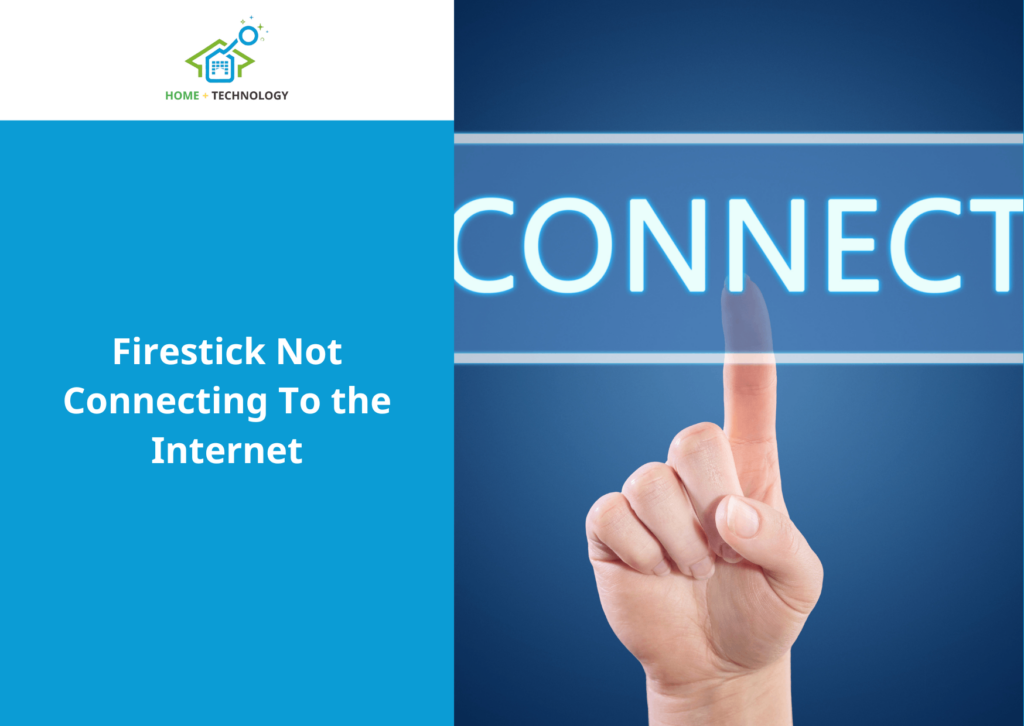
If your FireStick isn’t connecting to the internet, it could be due to a variety of reasons. Internet connectivity is essential for the proper functioning of your FireStick, and any disruption can cause the device to malfunction.
Internet connection issues are common problems, and to verify whether this is the case, navigate to Settings and select Network from your home screen. You can check the status of your internet connection by pressing the play/pause button on your remote while highlighting your Network.
If the connection is active, but your FireStick still isn’t working, try disconnecting and reconnecting your WiFi. You can do this via Settings > Network, then select your Network, press the options button on your remote, and choose to forget the Network.
Then, select your Network again from the list to re-establish a fresh connection and enter your WiFi password when prompted.
If the issue is still there, consider resetting your WiFi router. This involves unplugging the power cord, waiting for about 30 seconds, and plugging it back in. Allow a few minutes for the router to reboot before attempting to connect your FireStick to the internet again.
Another factor could be the strength of the WiFi signal reaching your FireStick. If you regularly encounter connectivity issues, you must move your router and FireStick closer together, as well as clear any obstacles between them.
Make sure that your FireStick or Fire TV device is not placed in enclosed areas, like closets, which can block WiFi signals. Large glass or metal objects can also deflect signals, so I recommend removing such potential hindrances.
If you’ve replaced the original FireStick cables with your own, this could also be causing compatibility issues. Switching back to the original cables may solve the problem.
Finally, persistent connection issues could also arise from an outdated modem or router. If you’ve tried all other solutions and still face consistent connectivity problems, consider replacing your old router or modem. Keep in mind, however, that this option should be a last resort due to the associated costs.
5. FireStick Unresponsive
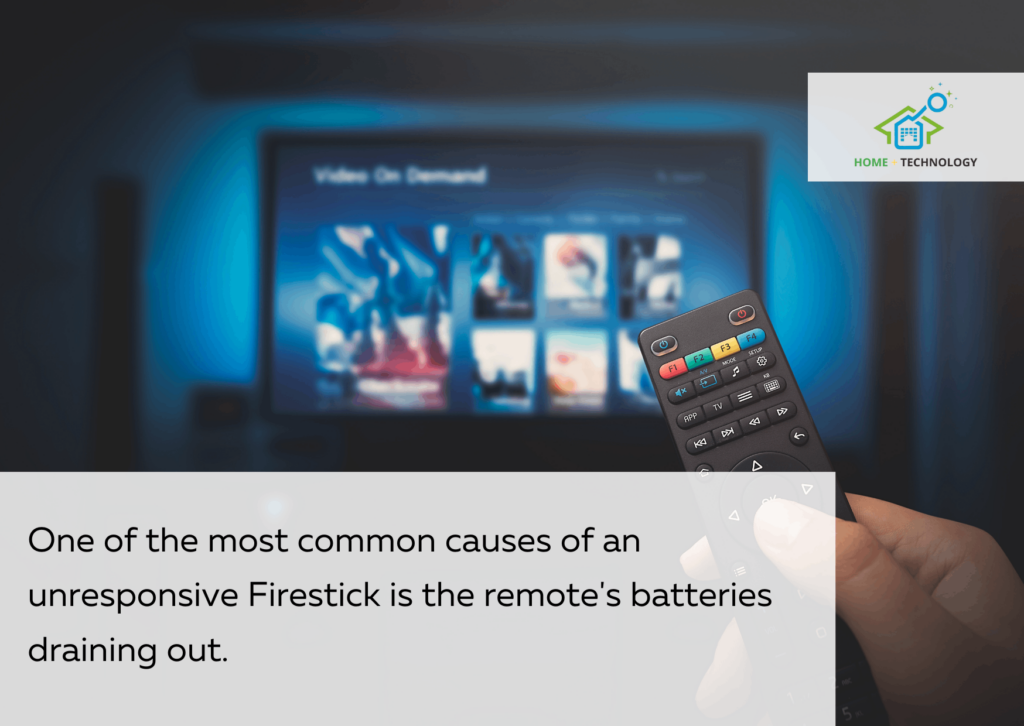
One of the most common causes of an unresponsive Firestick is the remote’s batteries draining out.
Amazon has an inbuilt feature in the FireStick settings that allows you to check the remaining battery life of your remote control. If you notice that the battery is low, replacing the batteries might fix the issue.
To check the status of the remote battery, Navigate to Settings > Remotes & Bluetooth Devices > Amazon Fire TV Remotes. You can click on your remote from the list to view its status and see how much battery life is left.
Sometimes, simply restarting your remote control can solve the problem.
The method to restart a FireStick remote depends on the device’s generation, so you’ll need to go through this guide on rebooting or restarting a Firestick. Typically, after restarting, the remote control should respond without any issues.
If you have tried both solutions above and your FireStick remains unresponsive, there might be a hardware issue with the remote itself. In such cases, consider replacing your Firestick remote online.
6. Firestick Overheating
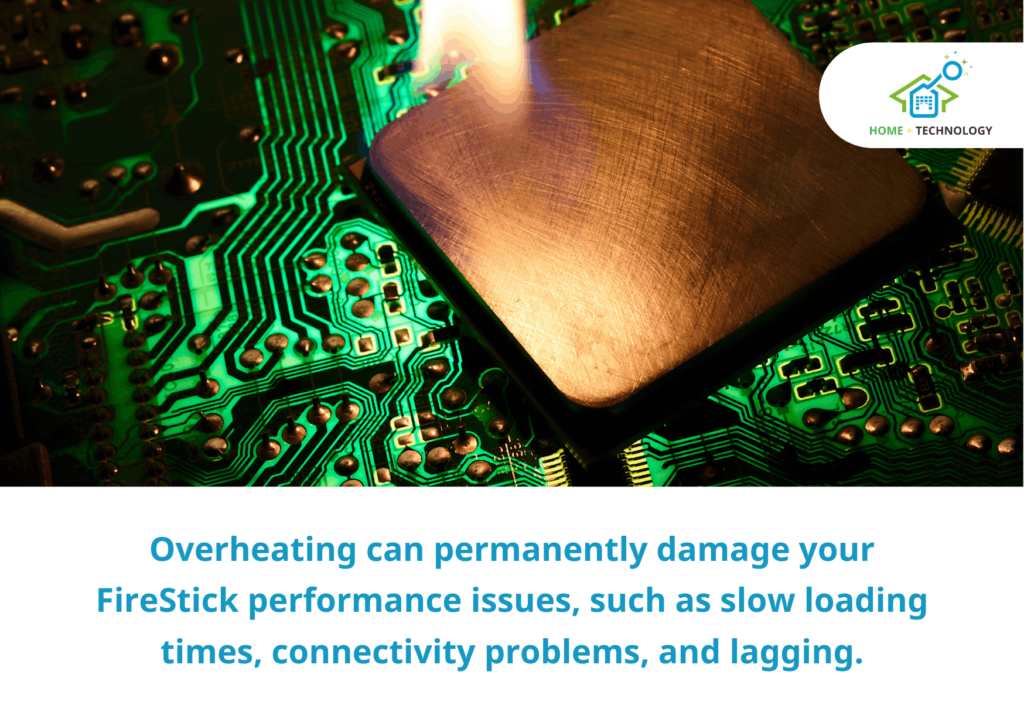
Overheating can permanently damage your FireStick performance issues, such as slow loading times, connectivity problems, and lagging.
FireStick devices are generally designed to handle heat well. However, like any other electronic device, they can overheat under certain circumstances.
As per an article titled “Is Your Firestick Overheating? 10 Quick Solutions To Solve This Problem” published on Troypoint, there are several indicators that could suggest that your FireStick is overheating including hardware lagging, loss of connectivity, buffering, freezing, or the device becoming excessively warm even when not in use.
So, there are multiple ways to fix overheating in FireStick which are listed below.
1. Unplug and Cool Down: If your FireStick is overheating, the first thing you can do is unplug it and allow it to cool down for a few minutes before plugging it back in. This process allows the device to shut down and refresh.
2. Clear Cache and Data: Some larger apps can cause your FireStick to overheat due to the heavy load they place on the device. Clearing the cache and data on these apps can prevent this issue and help your device run more smoothly.
3. Force Close Apps: Apps running in the background can also lead to overheating. It’s advisable to force close these apps when they are not in use to reduce the load on your FireStick.
4. Use HDMI Extender: Using the HDMI extender provided with your FireStick can help prevent overheating by keeping the device away from the TV, which can generate heat.
If none of these solutions work, you may need to reset your FireStick to its factory settings. Please note that this will erase all installed apps, app data, and device settings.
7. FireStick Buffering
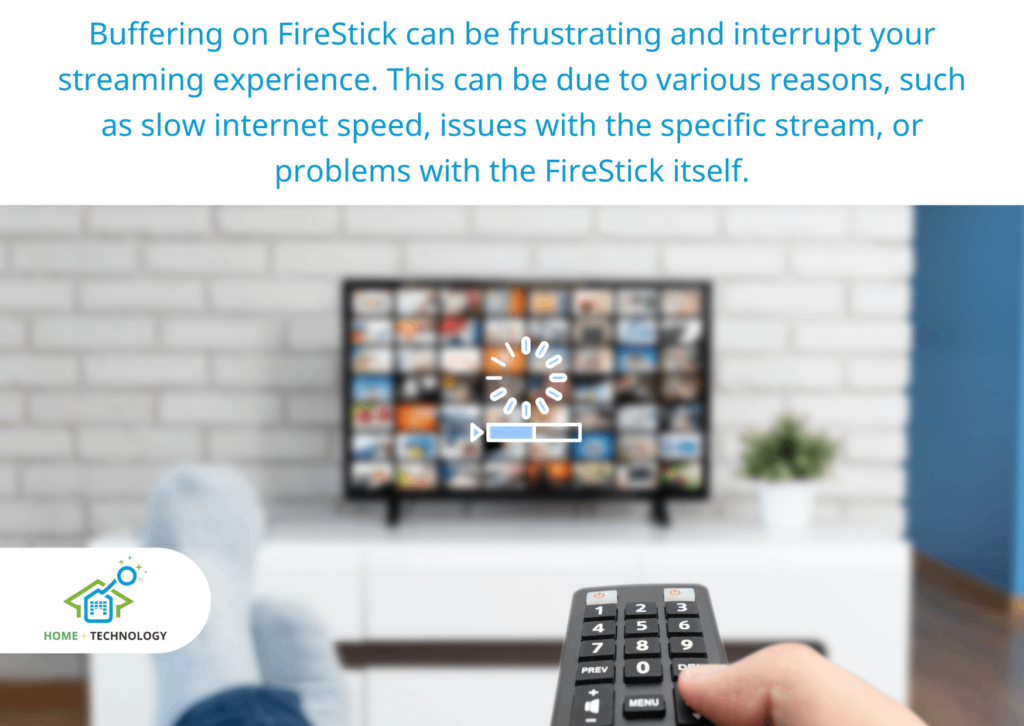
Buffering on FireStick can be frustrating and interrupt your streaming experience. This can be due to various reasons, such as slow internet speed, issues with the specific stream, or problems with the FireStick itself.
- Slow Internet Speed: For a smooth streaming experience, certain download speeds are required. You typically need a speed of 5 Mbps for streaming content in 1080p and at least 15 Mbps for 4K videos. If your internet speed is slower than this, it could lead to buffering issues.
- Run Speed Tests: To confirm your current internet speed, you can run a speed test. You can do this through the Amazon Fire TV settings or any device connected to your WiFi network. This will help determine if your connection is fast enough for streaming.
- Restart Devices: Restarting both your Fire TV Stick and WiFi router can help resolve temporary issues that may be causing the buffering.
- Positioning of Devices: The location of your FireStick and router can affect your connection. Try to place these devices as close to each other as possible and remove any obstructions between them. This can improve signal strength and reduce buffering.
- ISP Speeds: If you’re not getting the speeds your Internet Service Provider (ISP) claims you should be receiving, you can contact their customer support. However, if the recorded speed is close to what your ISP claims but still isn’t fast enough, you may need to upgrade to a more expensive plan.
By addressing these potential issues, you can easily fix Firestick buffering issues, improve your FireStick’s performance, and enjoy a smoother, buffer-free streaming experience.
How To Fix Amazon FireStick Not Working?
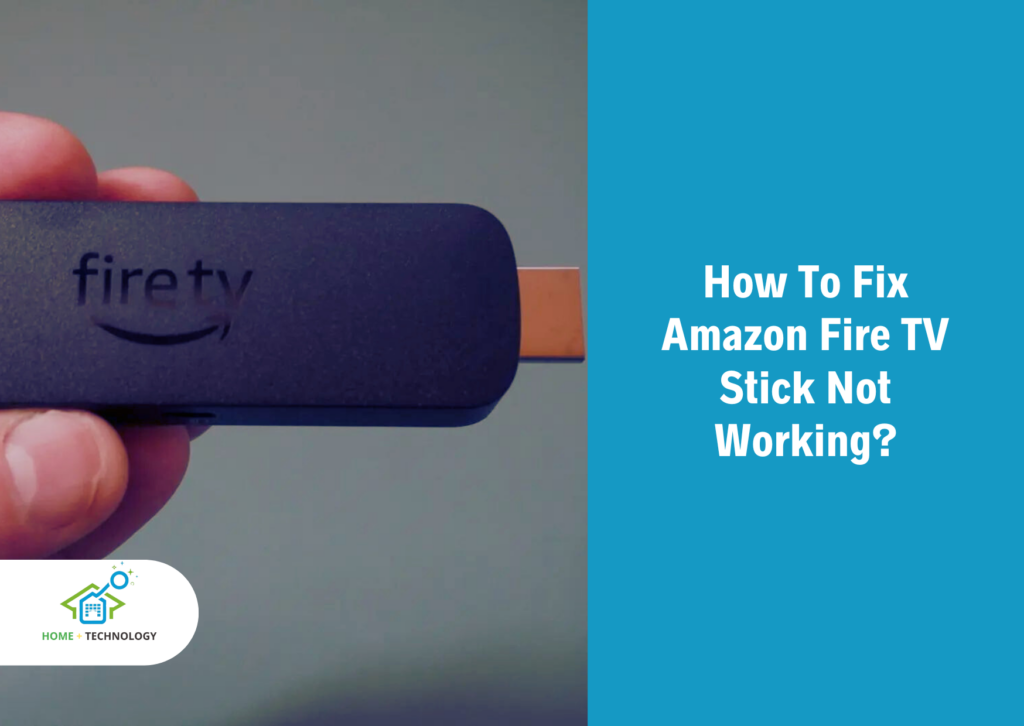
There are several ways to fix your Amazon FireStick not working, and you can do most of them yourself without needing a professional.
Here are the methods that have worked for us and many other people out there in fixing the FireStick problem when it stops working.
Check Whether Your Firestick Is Properly Set Up
Even though your Firestick was working fine before, it is possible that with time, the cables or the connections got loose, making the device unresponsive. Make sure you adjust the HDMI cable, and even after this, if your device is still in the same condition, try using another HDMI cable.
Always use an Amazon Power Adapter to power your Firestick, and don’t use a spare USB port for power. When a USB port is used to power the device, sometimes the device reboots itself and causes several issues.
Check The Batteries Of The Remote
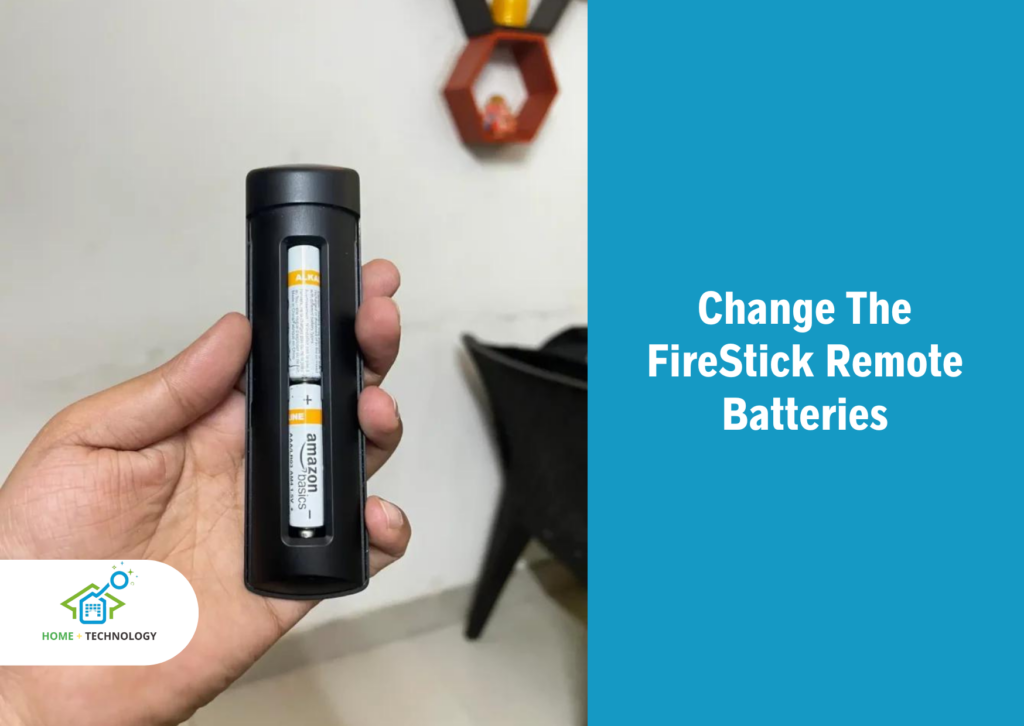
Checking batteries is the most straightforward and efficient solution to fix this problem, yet it’s often overlooked. It’s possible that your Amazon Fire TV Stick isn’t malfunctioning at all; instead, the issue is with the depleted batteries.
If you can’t recall the last time you replaced the batteries, it’s worth trying a new set to see if that resolves the problem.
The Fire TV Stick doesn’t provide any signals when the batteries are due for replacement. Moreover, the batteries in this device tend to drain quicker than you might expect, so it’s wise always to have a spare battery set ready.
Restart Your Amazon Fire TV Stick
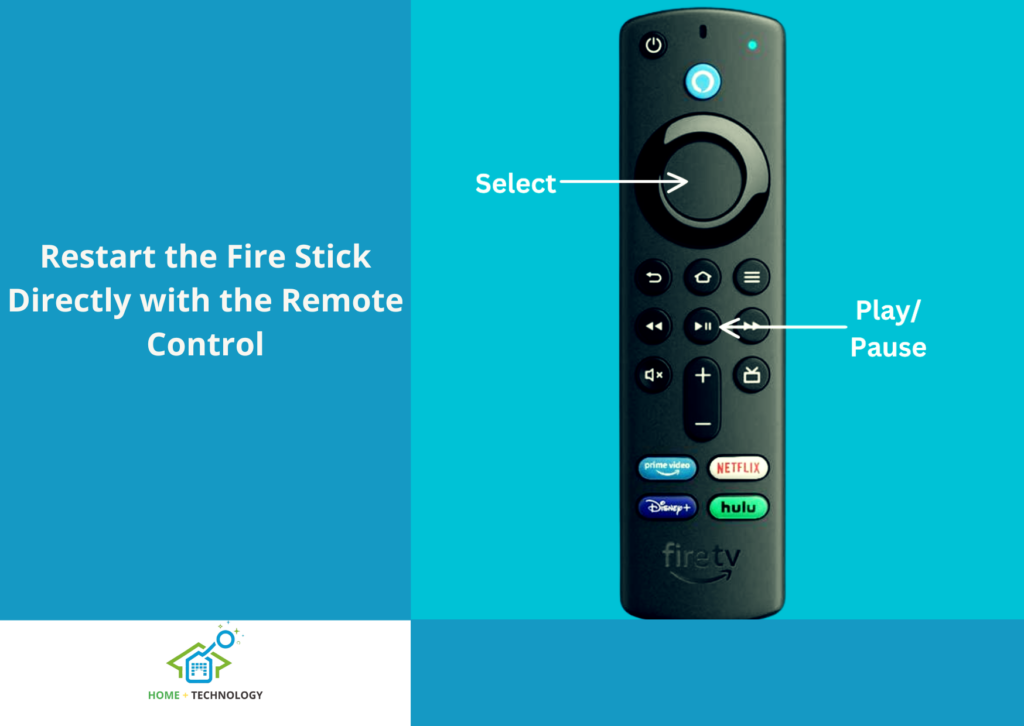
While the Amazon Fire TV Stick is designed to stay connected and plugged in continuously, the tried-and-tested method of restarting your device is always beneficial.
An occasional reboot can fix the issues like failed updates or connectivity problems. The three ways to restart your Amazon Fire TV Stick are listed below.
- Restart From Device Settings: Navigate to ‘Settings,’ then ‘My Fire TV,’ and select ‘Restart’ and confirm by clicking ‘OK’. Close all open applications before initiating a reboot.
- Use the Remote Control: If your device becomes unresponsive and prevents you from accessing the settings, you can use the remote control. Press and hold down the Play/Pause button for around 10 seconds, and your Fire TV Stick will restart without requiring any further confirmation.
- Use the Power Cycle Method: If both previous methods fail, you can force reboot your device by disconnecting the power supply and then reconnecting it back again. This hard reset will cause your Amazon Fire TV Stick to restart.
Tip- Never reboot your device while it’s in the middle of an update; doing so could corrupt the files being updated, leading to additional problems.
Check The Internet Connection Signal Strength
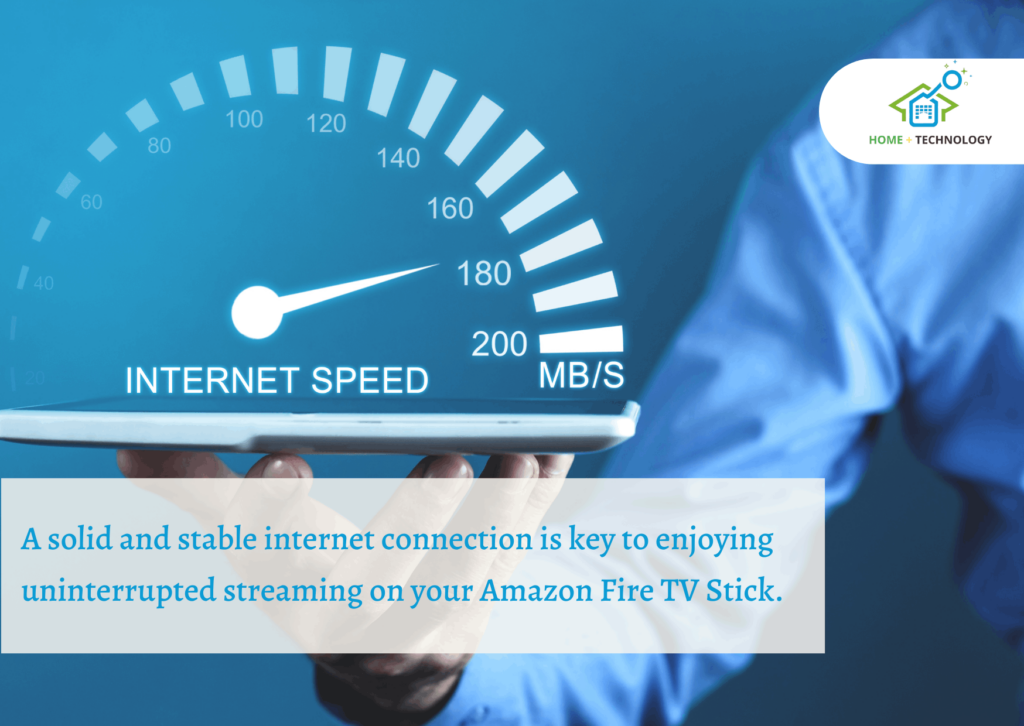
If you’re experiencing problems like slow or buffering videos, your internet connection is likely slow and causing these issues. Here’s how you can check the internet connection strength for your devices:
- Go to ‘Settings‘ and then select the ‘Network‘.
- Check if your WiFi is functioning correctly. If it’s connected, check the signal strength. A weak network signal can cause a buffer or degrade the quality of your video streaming.
- A simple yet effective solution could be to bring your Fire TV Stick and router closer to each other. This can often enhance the signal strength and improve your device’s performance.
- If the issue is still there, try rebooting your router, as this often solves connectivity problems.
Remember, a solid and stable internet connection is key to enjoying uninterrupted streaming on your Amazon Fire TV Stick.
Check For Software Updates On Your Amazon Fire TV Stick

There are a few problems with Firestick that are caused by the software on which the device operates. Your first step should be to ensure that the software is up-to-date.
Amazon’s general advice is to keep the device plugged in at all times, allowing updates to occur seamlessly in the background.
Never power off or disconnect the device during an update. Usually, the device updates automatically, but there are instances where you might need to initiate the process manually.
Here’s how you can do that:
- Navigate to ‘Settings,’ then move on to ‘My Fire TV’.
- From there, go to ‘About’ and finally ‘Check for Updates’ to view any available updates.
Reset All The Apps On The Amazon Fire TV Stick
Resetting all the apps on your Amazon Fire TV Stick can help resolve various issues, including buffering, lagging, and apps not working.
Here’s how you can do it:
- Go to the Settings menu on your Fire TV Stick.
- Select Applications, then Manage Installed Applications.
- Choose an app that’s causing trouble and select Clear Data or Clear Cache.
- Repeat this process for all the problematic apps.
Remember, resetting apps will erase all the data they have stored on your device. You may need to log in again and reconfigure the settings for each App.
Check The Connections And HDMI Cables

A faulty or loose connection can cause problems with your Fire TV Stick’s performance.
To check your connections:
- Make sure your Fire TV Stick is firmly plugged into your TV’s HDMI port.
- Check the power cable. It should be securely connected to both the Fire TV Stick and a power source.
- Examine your HDMI cable for any visible damage. A damaged cable could be the reason for your issues.
If necessary, replace your HDMI cable with a new one to ensure a good connection.
Try Another HDMI Port or TV
If you’ve tried everything else and your Fire TV Stick still isn’t working, it could be an issue with your TV’s HDMI port.
Here’s how you can test this:
- Plug your Fire TV Stick into a different HDMI port on your TV.
- If the problem persists, try using your Fire TV Stick with a different TV.
This can help you determine whether the issue is with your Fire TV Stick or your TV.
If your Fire TV Stick works with a different HDMI port or TV, you might need to repair or replace your original TV. If it doesn’t work with a different port or TV, the problem is likely with the Fire TV Stick itself.
Clear Your Fire TV Stick Cache
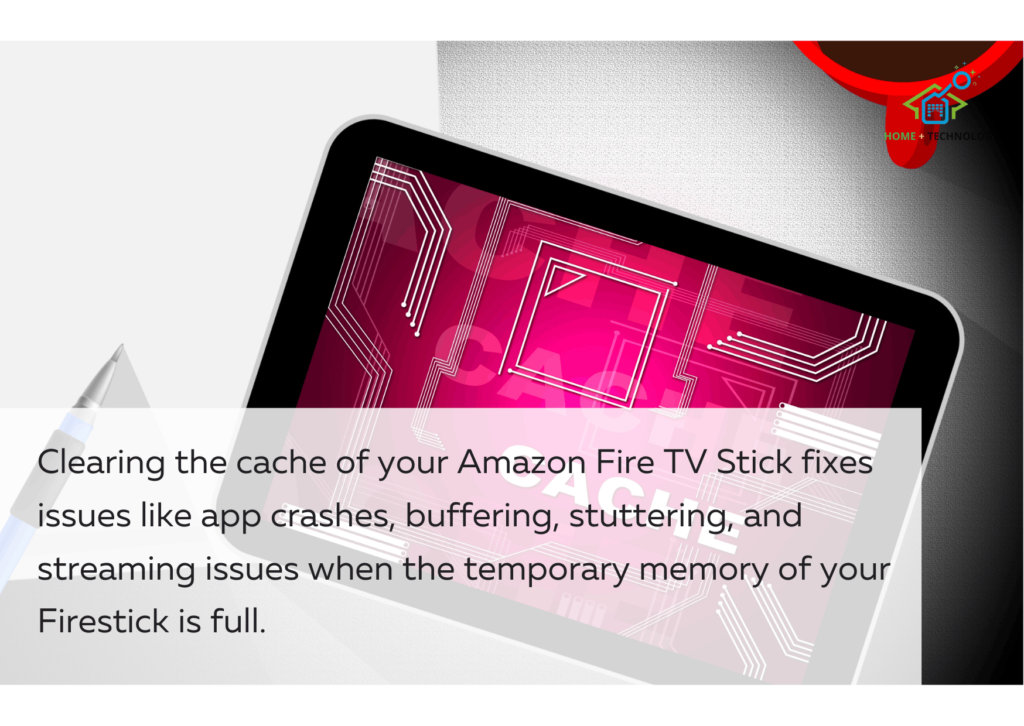
Clearing the cache of your Amazon Fire TV Stick fixes issues like app crashes, buffering, stuttering, and streaming issues when the temporary memory of your Firestick is full.
To clear the cache on Firestick, use the below steps.
- From the Home Screen, select ‘Settings.’
- Go to ‘Applications‘ and click on it.
- Choose the ‘Manage Installed Applications‘ option.
- Go through each App and select the ‘Clear Cache‘ option.
Once you’ve cleared the cache for all applications, restart your Amazon Fire TV Stick for smoother operation and resolve any ongoing performance issues.
Check Whether Your Amazon Firestick is Compatible With Your
Sometimes, your Amazon Firestick might not work due to compatibility issues with the device to which it is connected, and there’s no issue with the Firestick itself.
Check your TV manual or contact Amazon customer support in such a case.
Check For The VPN Issues

While you must be surprised by the VPN issues being on this troubleshooting guide, your Amazon Firestick can connect with the VPN.
But when you are connecting the device to the VPN, you should always check whether your VPN is compatible with the Firestick.
Your Amazon Fire Stick might not work with all the VPN services as some of the VPN services are blocked by Amazon, and in this case, your Firestick will not work at all.
Why is My Amazon FireStick Suddenly Not Working?
If your Amazon Firestick is suddenly not working or stopped working, make sure to check if the power adapter is plugged correctly into the FireStick and the power adapter.
If the Firestick is plugged correctly and still not working, use a different power adapter. Also, plug the Firestick into a different HDMI port on your TV.
If your Firestick is still not working, then the problem is with the device’s hardware and you will need to either get your Firestick repaired or buy a new one.
Can Firesticks Go Bad?
Yes, Firestick can go bad like all other electronic devices. The lifespan of a firestick depends on factors such as the device’s usage and the environmental conditions.
When a Firestick is heavily used or used for streaming higher-quality content continuously for several hours, the device wears out quicker than the anticipated lifespan of 2 to 4 years.
Summary
- Restarting the Firestick and the router can often resolve common problems. Unplugging the Firestick, waiting a few seconds, and then plugging it back in also help with unresponsive or black screen fire TV issues.
- You can fix the buffering problems by running speed tests, restarting the Firestick and the router, and bringing them closer together.
- You can quickly solve App crashing issues by using the recommended power cord and adapter, reinstalling and updating apps, and performing a factory reset if necessary.
- If the Firestick is not connecting to the WiFi, you should restart the router and forget to reconnect to the network.
- If the issue is with the Fire TV remote, you can try replacing the batteries, reconnecting the remote to the Firestick, and restarting the device.

